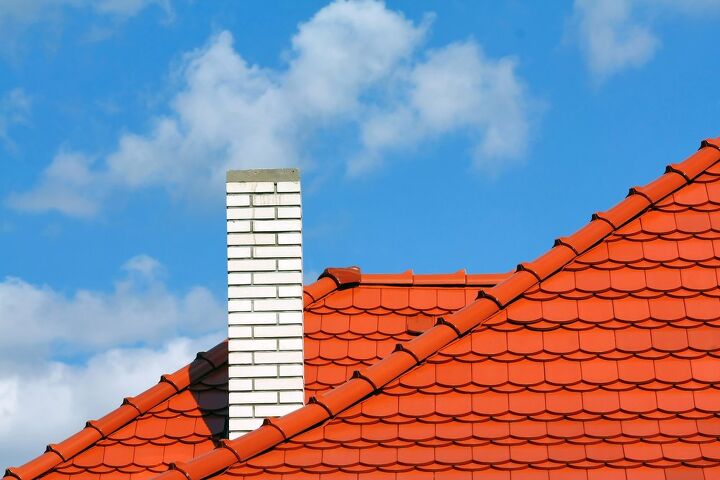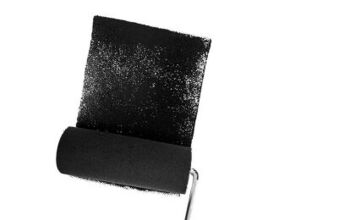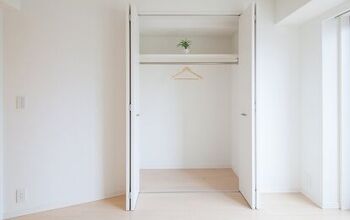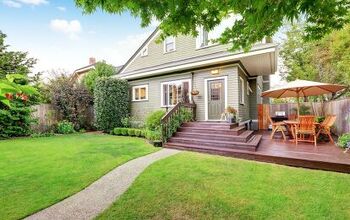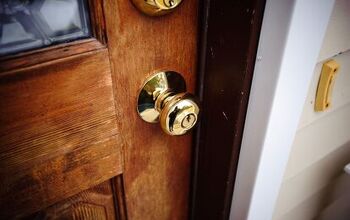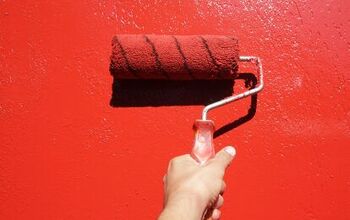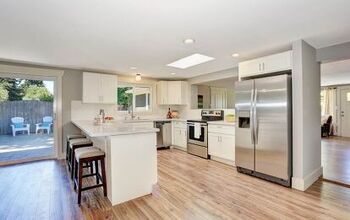What Is The Best Color To Paint An Exterior Chimney? (Find Out Now!)

If the exterior of your home is making you feel less than excited, it might be time for a change. Painting the exterior is a way to change the look of your home without a complete renovation. This includes painting the chimney, too, which can be a task in itself, but what’s the best color for an exterior chimney?
The color of your exterior chimney should complement the exterior of your home while reflecting your personal aesthetic. Typical colors for chimneys are tan, beige, cream, and light gray for a more natural look. However, if you have a more contemporary-style home, black and gray work well, too.
Taking on any type of remodeling project can be overwhelming, including painting. Mostly, this is because there are so many choices, and you want to make sure you select the best color. Therefore, before you pick up the paintbrush, use this as a guide to choose the right color for your chimney.
Do You Need an Interior Decorator?
Get free, zero-commitment quotes from pro contractors near you.

Types of Chimneys
Before you start painting your chimney, you first need to know what type of chimney you have. There are two main types of chimneys–masonry chimneys and prefabricated metal chimneys.
A masonry chimney consists of bricks, blocks, or stone, and probably most familiar when you think of a chimney. Then, you can also have a metal chimney featuring, you guessed it, metal.
Choosing a Color to Paint Your Exterior Chimney
Before you paint your chimney, you should ask yourself if you want it to stand out or blend in. The color you paint your chimney will determine the focal point of the exterior of your home.
Also, although painting your home’s exterior a dark color might be trendy, tread carefully. Over time, darker colors tend to fade more thanks to the UV rays from the sun.
Neutral Colors for an Exterior Chimney
Neutral colors are the safest option when painting your chimney. Shades of white like tan, beige, and cream typically work with most color schemes. Painting the chimney white can brighten the look of your house while painting it off-white can give it a softer look.
Contrasting Colors for an Exterior Chimney
If the color of your home is light, you can create a contrast by painting your chimney a dark color. This contrast can also be brought down to the exterior trim or shutters to tie in the color of the chimney.
Conversely, if you have darker color on your home, you could paint your chimney a lighter color. To keep the contrast from being too jarring, select colors from the same color swatch.
A typical paint swatch features a particular color in various shades, going from light to dark. So, for a subtle contrast, you might choose colors within one or two blocks from each other on the swatch. For a more dramatic contrast, you might select the colors on opposite ends of the swatch.
Monochromatic Colors for an Exterior Chimney
If you prefer everything to blend, choose a monochromatic look by painting the chimney and the house the same color. This can create calmness by pairing soft and light paint shades and making the shutters or trim a focal point.
Painting a Brick Exterior Chimney
While a brick wall on a house is somewhat protected from the elements by an overhang, a chimney is not. A chimney has more exposure to weather. This is especially true with painted chimneys, as it can cause them to deteriorate more quickly.
Sometimes, water can find its way behind the paint and remain inside the bricks and mortar. Over time, the water will freeze and thaw, causing the bricks and mortar to break down. When painting a brick chimney, you want to be careful to follow steps to prevent this from happening.
Before painting the brick, apply a block-filler masonry primer. This is a thick product that will fill any gaps and pores on the surface. It will help keep water out while also providing a smoother surface for the topcoat to stick to.
After the primer has dried, use a high-quality exterior paint and apply it with a paint sprayer. If you don’t have access to a paint sprayer, a paintbrush will suffice to get into the joint lines of the bricks. Use a paint roller with long fibers to finish the front surface of the bricks.
Painting a Metal Exterior Chimney
Before painting your chimney, check the surface for any signs of rust. Rust will not hold paint and will ultimately flake the new paint off. Use a steel wool pad for sanding any rusted areas, then use a damp rag to wipe the residue away. When painting a metal chimney, you want to choose a paint rated for high heat.
Use a high heat paint rated for more than 250 degrees Fahrenheit as it is self-priming. High heat paints rated for less than 250 degrees Fahrenheit have primers based on the temperature rating of the metal.
You can purchase high-heat paint in an aerosol spray can. Be sure to use painter’s tape and paper to protect your shingles from overspray. Use a continuous motion while spraying the paint back and forth to prevent runs in the paint.
Brush-on paint is also available in high-heat-rated formulas that eliminate the need for painter’s tape and paper. Use a standard paintbrush and apply in light, even strokes. If necessary, you can apply a second coat.
Things to Consider When Painting the Exterior of Your Home
Selecting the right outdoor paint primer for the outside of your home can be as difficult as choosing the paint color. If you choose the wrong primer, you can end up with cracks, peeling, or fading. If you choose the wrong color, you can be stuck with it for years.
Consider these things before you begin painting your home’s exterior.
Should You Use Oil-Based or Latex Primer?
When choosing the primer for the exterior of your home, you want it to be a high-quality exterior latex primer. This paint is more flexible than oil-based paints, which can harden and crack, leading to water damage. Latex can also handle shifting temperatures and dries quicker than oil-based paint.
Exterior Paint Finishes
Different finishes bring attention to the house and make a statement. When painting your home and trim, you want to mix flat and shiny finishes to create depth. Use flat or satin finishes on the body of your home, semi-gloss for accent trim, and high-gloss for doors.
How Much Paint Do You Need?
You’ll need more primer when transitioning from a dark to light color or if you’re covering rough surfaces like stucco walls. A gallon of quality outdoor paint primer usually covers 350 to 400 square feet with one coat. For the best finish, use two coats of paint primer.
Taking Time to Prep Before Painting
As with most painting projects, prepping your area beforehand helps create a flawless result. Before painting your exterior, use a hose or power washer to remove any dust, dirt, or mildew. If there is any mildew, mix one-part bleach with three parts water, set for 20 minutes, then rinse.
Protect any surrounding areas, structures, or plants by laying drop cloths to keep the paint from splattering. Prep the trim and siding by removing any unnecessary hardware, fill any holes, and replace cracked caulking.
Be Aware of the Weather When Painting
Before you start your exterior paint project, watch the weather channel. You want a low-humidity, rain-free day with temperatures between 60 and 85 degrees Fahrenheit. These conditions can keep paint from drying too quickly and leaving streaks.
You also want to avoid painting in direct sunlight. Opt to paint the west side of your home in the morning and the east side of your home at night.
Paint in Order
Paint one side of your home at a time. If you’re painting siding, work from the top to the bottom to avoid splattering lower sections or smudging wet paint. Paint the top section across the width, then do the middle sections, followed by the lower sections.
Complete the project by painting the foundation, then painting the trim, doors, and shutters.
Do You Need an Interior Decorator?
Get free, zero-commitment quotes from pro contractors near you.

Related Questions
What’s the average cost to have the exterior of your house painted?
Painting the exterior of your home boosts curb appeal and gives your home a refresh. On average, painting the exterior of a house costs $3,048. The typical price range for this type of work is $1,777 to $4,320. The average price per square foot ranges from $0.50 to $3.50. Stucco and brick typically cost $1 more per square foot than painting vinyl or wood. Painting a 2,500 square foot home costs $4,000, but it can range from $1,250 to $8,750. Keep in mind that the condition of your home, as well as the location, will ultimately determine the project cost.
Can you remove paint from exterior bricks?
If you’re unhappy with your painted bricks and looking to start fresh, you can remove the paint. You typically need to use chemical paint strippers but keep in mind that this process will be a challenge. It may be safer and more cost-effective to hire a professional to complete the project. A contractor is usually able to remove pre-existing paint on your brick house within a few hours. The average cost for paint removal is about $400 per 250 square feet.

Stacy Randall is a wife, mother, and freelance writer from NOLA that has always had a love for DIY projects, home organization, and making spaces beautiful. Together with her husband, she has been spending the last several years lovingly renovating her grandparent's former home, making it their own and learning a lot about life along the way.
More by Stacy Randall



